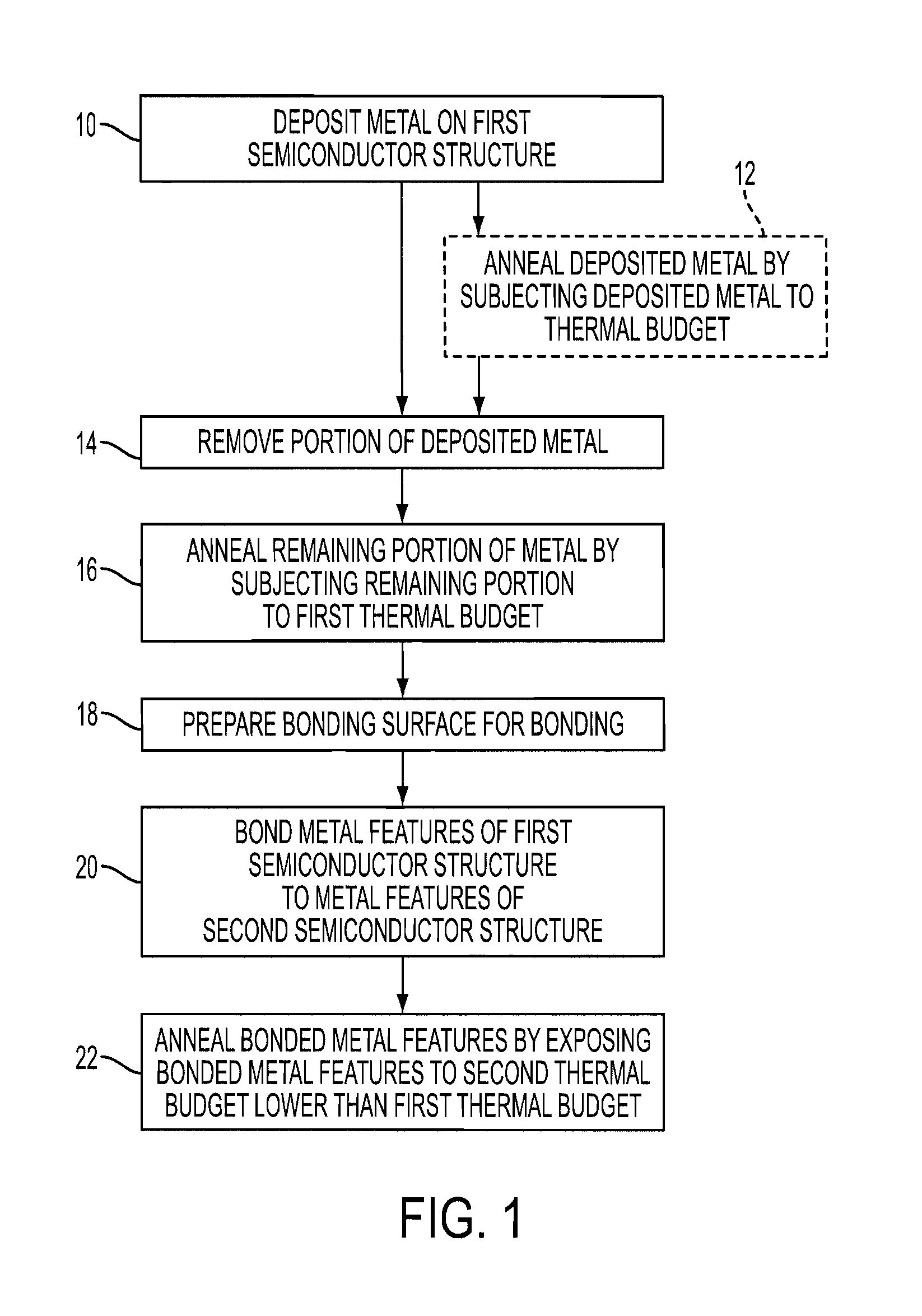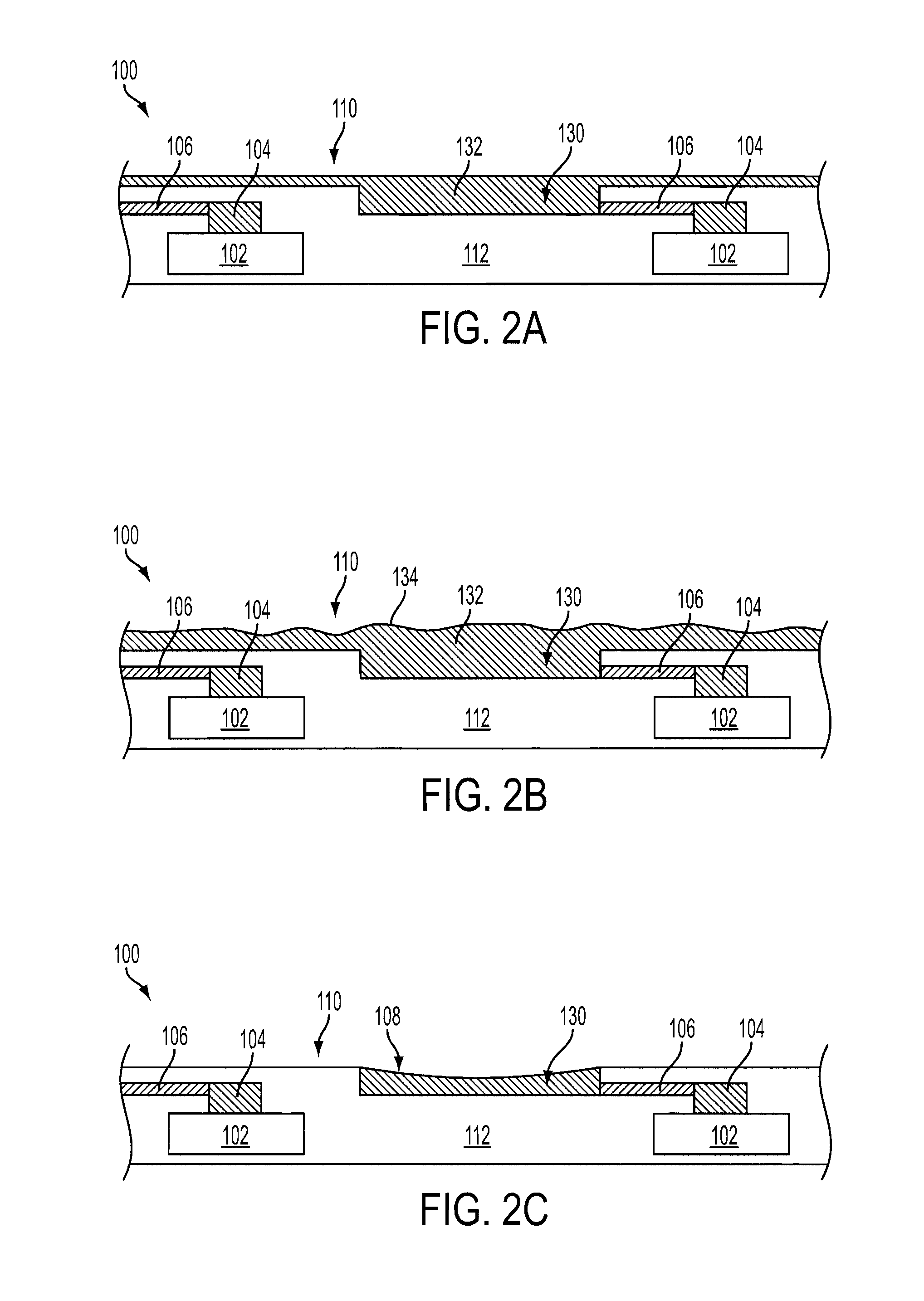Methods for bonding semiconductor structures involving annealing processes, and bonded semiconductor structures and intermediate structures formed using such methods
a technology of annealing process and semiconductor structure, which is applied in the direction of semiconductor/solid-state device details, semiconductor devices, electrical apparatus, etc., can solve the problems of prone to mechanical failure or electrical failure, less partial melting of metal materials, and undesirable direct bonding processes
- Summary
- Abstract
- Description
- Claims
- Application Information
AI Technical Summary
Problems solved by technology
Method used
Image
Examples
embodiment 1
[0123]A method of directly bonding a first semiconductor structure to a second semiconductor structure, comprising: depositing metal over a first semiconductor structure; removing a portion of the metal deposited over the first semiconductor structure; subjecting a remaining portion of the metal deposited over the first semiconductor structure to a first thermal budget and annealing the remaining portion of the metal deposited over the first semiconductor structure; directly bonding at least one metal feature of the first semiconductor structure comprising the remaining portion of the metal deposited over the first semiconductor structure to at least one metal feature of a second semiconductor structure to form a bonded metal structure comprising the at least one metal feature of the first semiconductor structure and the at least one metal feature of the second semiconductor structure; and subjecting the bonded metal structure to a second thermal budget and annealing the bonded meta...
embodiment 2
[0124]The method of Embodiment 1, wherein subjecting the remaining portion of the metal deposited over the first semiconductor structure to the first thermal budget and annealing the remaining portion of the metal deposited over the first semiconductor structure comprises subjecting the remaining portion of the metal to a first average annealing temperature over a first annealing time period, and wherein subjecting the bonded metal structure to a second thermal budget and annealing the bonded metal structure comprises subjecting the bonded metal structure to a second average annealing temperature over a second annealing time period.
embodiment 3
[0125]The method of Embodiment 2, wherein the first average annealing temperature is higher or equal than the second average annealing temperature.
PUM
| Property | Measurement | Unit |
|---|---|---|
| thickness | aaaaa | aaaaa |
| temperature | aaaaa | aaaaa |
| temperature | aaaaa | aaaaa |
Abstract
Description
Claims
Application Information
 Login to View More
Login to View More - R&D
- Intellectual Property
- Life Sciences
- Materials
- Tech Scout
- Unparalleled Data Quality
- Higher Quality Content
- 60% Fewer Hallucinations
Browse by: Latest US Patents, China's latest patents, Technical Efficacy Thesaurus, Application Domain, Technology Topic, Popular Technical Reports.
© 2025 PatSnap. All rights reserved.Legal|Privacy policy|Modern Slavery Act Transparency Statement|Sitemap|About US| Contact US: help@patsnap.com



